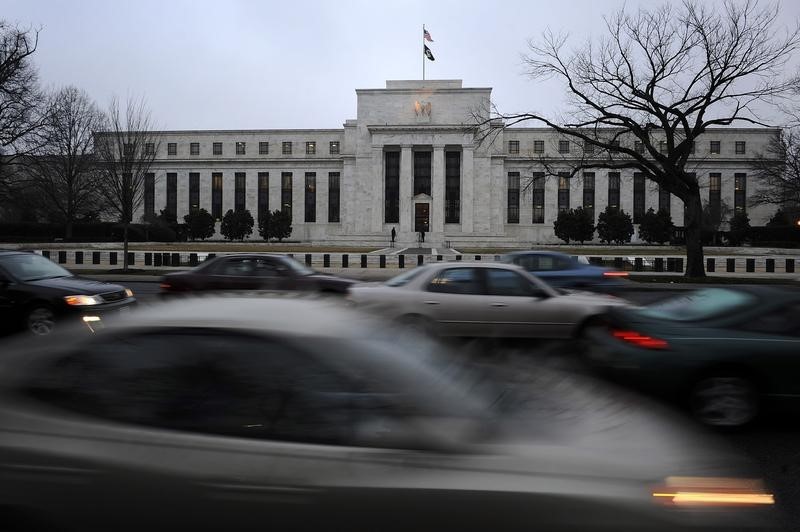(Bloomberg) -- The Federal Reserve took a step to avoid crowding out some commercial bank lending with its exploding balance sheet. It may eventually have to do more.
The central bank said on Wednesday that that it was temporarily easing banks’ leverage ratios in order to increase their ability to provide credit to households and businesses hard hit by the fallout from the coronavirus.
It’s not clear though whether the move -- which the Fed said will free up 2% of bank capital -- will be enough to prevent credit dislocations, given a possible doubling of the central bank’s record $5.25 trillion balance sheet in coming months as it deploys unlimited asset purchases to help fight the economic effects of the virus.
Here’s why some Fed watchers say that could be a problem.
When the Fed buys a bond from an investor, it credits what it owes the investor to a bank as a reserve balance. There’s no crowding out as long as the investor leaves that money on deposit with the bank.
But if the investor wants to take the money out, the bank must find a way to provide it. It can reduce its reserve balance at the Fed. The trouble is it can only do that through a transaction with another bank because banks are the only institutions allowed to hold those balances at the Fed.
From the perspective of the banking system as a whole, the reserve balance remains on the asset side of the balance sheet, taking up space that could otherwise be devoted to loans to businesses and consumers.
‘Eminent Domain’
“When the Fed creates reserves, it’s seizing space on the asset side of bank balance sheets by eminent domain,” Wrightson ICAP (LON:NXGN) chief economist Lou Crandall said.
This crowding out is different from the long-held concern that stepped-up borrowing by the federal government would make it harder for businesses and households to obtain credit. In this case, it’s the central bank, not the government, that would be involved in squeezing out private sector financing.
So far, at least, that’s not happening. Responding to demands from companies for cash to ride out mandated business shutdowns, banks boosted commercial and industrial loans by a record $176.2 billion, or 7.4%, in the week ended March 18.
But in a sign of the potential pinch ahead, cash -- which includes reserve balances held at the Fed -- jumped to 10.8% of total bank assets of $18.8 trillion, from 9.9% in January, and is poised to rise further.
The tweak in banks’ leverage ratio to exclude reserves and Treasury securities from the calculation will help. But given the boom in the Fed’s financing facilities for a wide range of borrowers, the central bank may need to go further and effectively diversify its funding sources away from the banks.
To do so, former Fed official Roberto Perli said the central bank could increase the rate it pays on reverse repurchase agreements so it takes in more cash from money market funds. Those agreements are now drawing in lots of money but that could change if financial markets become more stable.
Treasury Deposits
“Another way to do it would be to persuade the Treasury to increase its deposits at the Fed,” said Perli, who is now a partner at Cornerstone Macro LLC.
During the 2008-09 financial crisis, the Treasury set up a Supplementary Financing Program under which it issued bills and then parked the proceeds at the Fed. At its height, the program totaled more than half a trillion dollars.
The ongoing ramp-up of the balance sheet is bigger and faster than during the crisis. Since the end of February, it’s surged by $1.1 trillion, with more to come.
“Dumping an additional $4 trillion of reserve balances onto the asset side of bank balance sheets would create serious strains,” Crandall said.
©2020 Bloomberg L.P.
